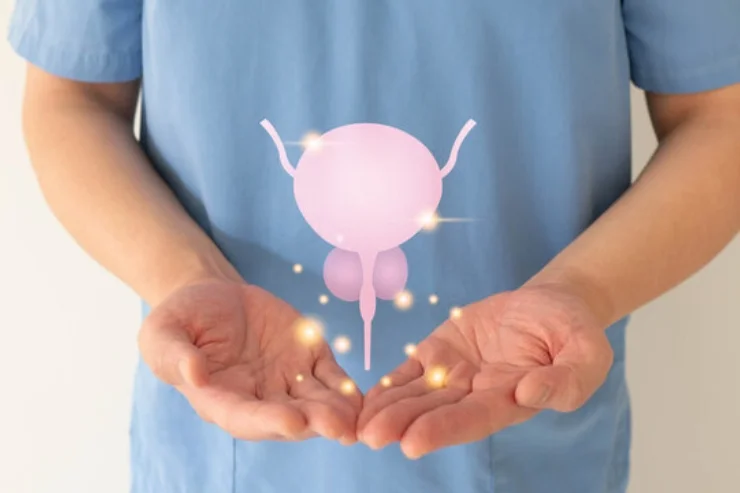Bladder Health
- Home
- Bladder Health

Bladder Health
Bladder health is crucial for overall urinary function and quality of life. Various conditions can affect the bladder, leading to symptoms such as urinary incontinence, bladder cancer, and overactive bladder. Understanding these conditions can help in seeking appropriate treatment and management.
Urinary Incontinence
Urinary incontinence is the involuntary leakage of urine, which can significantly affect a person’s quality of life. It is more common than many realize and can occur at any age but is particularly prevalent among older adults.
- Types:
- Stress Incontinence: Leakage occurs during physical activities that put pressure on the bladder, such as coughing, sneezing, or exercising.
- Urge Incontinence: A sudden and intense urge to urinate is followed by involuntary leakage before reaching the bathroom.
- Overflow Incontinence: Occurs when the bladder does not empty completely, leading to overflow and leakage.
- Functional Incontinence: Caused by cognitive or physical impairments that hinder the individual from getting to the bathroom in time.
- Treatment Options:
- Behavioral therapies, such as bladder training and pelvic floor exercises (Kegel exercises).
- Medications can help manage symptoms, especially in cases of urge incontinence.
- Surgical options may be considered for more severe cases, particularly for stress incontinence, including sling procedures and bladder neck procedures.
Transurethral Resection of Bladder Tumor (TURBT) for Bladder Cancer
TURBT is a common surgical procedure used to diagnose and treat bladder cancer. It involves the removal of tumors from the inner lining of the bladder using a cystoscope, a thin, lighted tube inserted through the urethra.
- Indications:
- Performed when a bladder tumor is suspected based on symptoms, imaging studies, or cystoscopy findings.
- Procedure:
- Under sedation or general anesthesia, the surgeon uses the cystoscope to visualize the bladder and remove abnormal tissue.
- Obtained tissue samples are sent for pathological examination to determine the presence of cancer and guide further treatment.
- Post-Procedure Care:
- Patients may experience some bleeding or urinary urgency after the procedure, which usually resolves within a few days.
- Follow-up appointments are essential to monitor for recurrence of cancer.
Overactive Bladder
Overactive bladder (OAB) is characterized by a frequent and urgent need to urinate, often accompanied by urge incontinence. It can significantly impact daily activities and quality of life.
- Symptoms:
- Urgency: A sudden, strong need to urinate.
- Increased frequency of urination, often more than eight times in a 24-hour period.
- Nocturia: Waking up multiple times at night to urinate.
- Possible urinary incontinence: Leakage of urine associated with the urgency.
- Treatment Options:
- Behavioral interventions, such as bladder training and lifestyle modifications.
- Medications that help relax the bladder muscle are often the first line of pharmacological treatment.
- In certain cases, neuromodulation techniques (e.g., sacral nerve stimulation) or invasive therapies may be considered for refractory cases.
Maintaining bladder health requires awareness of these conditions and seeking timely medical advice if symptoms arise. Effective treatment and management strategies are available to help individuals regain control over their bladder function and improve their quality of life.
